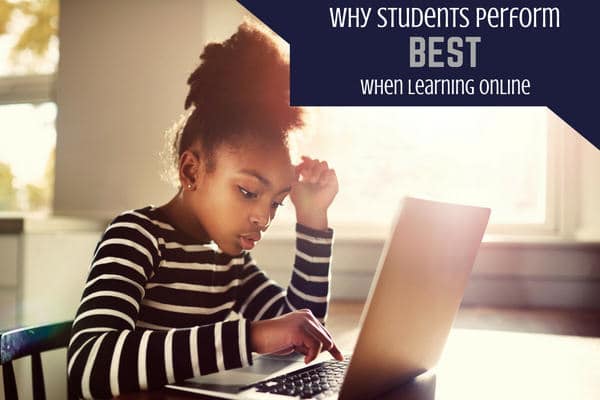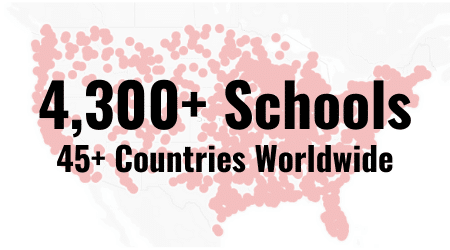Why Students Perform Best When Learning Online
I recently read about a school where graduation rates rose from 73% to 90%. And, their dropout rate fell from 14% to 3%. All in less than five years! If you’re like me, you want to know, “How!?”
The Walker County Board of Education in Jasper, Alabama accomplished this through online education. The school district setup more than 160 courses containing 5,000 lessons for their students to access online. Students behind in credits could now catch-up. Some could even get ahead and graduate early.
Walker County explained the mechanics of the online program and how it functioned within their district in a recent AMLE (Association for Middle Level Education) article.
However, the article is missing an important piece of the puzzle. It didn’t discuss the students’ personal learning experience and how that played a role in success.
We’ve found that success with online learning is due to four factors: empowerment, accessibility, engagement and feedback. These elements make online learning concepts stick!
Let me explain…
My Son Started Middle School This Year…
My son, Mark, started middle school last year. As the school year approached, the fear and anxiety grew.
Mark shared his concerns. His greatest fear was organization and time management. The transition from one teacher to several teachers increased his anxiety. He also knew his ADHD could make this endeavor that much more complicated.
“Uh, Mark… we do have an app for that…” just created an online course (the SOAR Learning & Soft Skills App) to help students like Mark.
The Moment of Truth
Having my own son use the SOAR Learning & Soft Skills App stirred mixed emotions. I was excited to watch him use it. But, I was nervous, too. “What if the online course doesn’t resonate with him? What if he hates it?”
After getting Mark registered, I stepped back and observed. I felt like a Nat Geo photographer observing a lion cub. I watched with great anticipation. “What would happen next?”
Knowing my son has ADHD and Dyslexia, I expected these disabilities to rear their ugly head. They often do during homework time.

My son Mark using the App.
I had only seen this level of engagement when he played video games. justSo, Did it Work?
Mark & The Walker County Board of Education
Although they are miles apart, I believe Mark and the students of Walker County had a similar experience. Utilizing online content allowed them to flourish in the learning process. Online learning provided…
- Empowerment: Students have control. They are in control of clicking, reading, and playing with the content. They own the learning process. Students love control! (See our popular article about the power of “control”, here).
- Accessibility: Online content is the pinnacle of accessibility… You can read on screen, listen to narration, and watch content through videos and animations. Even my dyslexic son experienced great success accessing the material.
- Engagement: Online courses are interactive. Students aren’t just “reading for information,” they get to interact with the material through exercises and activities.
These four factors led Walker County, and Mark, to see such gains with online learning.
Get Your Students SOARing Online
Research supporting online learning and success stories like this one led us to make the SOAR Learning & Soft Skills App. We built our online study skills course on the four key online learning principals: empowerment, accessibility, engagement, and feedback.
The SOAR Learning & Soft Skills app is versatile. It can be used by all different realms of education:
- Busy parents with students at home
- Tutors training students 1-1
- Teachers in a full classroom
… and the list goes on!
If you’d like to learn more about how your students can start learning online with the SOAR Learning & Soft Skills App, click here.
Sincerely,
Brian W.
P.S. To read the full Walker County story, click here.
Six Steps to
Conquer the Chaos
Get Our Free Guide & Information on...

"*" indicates required fields
SOAR® in the News
The SOAR® Curriculum
The most critical learning, organizing, and communication skills needed for school. Learn more here.
Who’s Using SOAR®?
SOAR® Guarantee
Click here to learn more.





